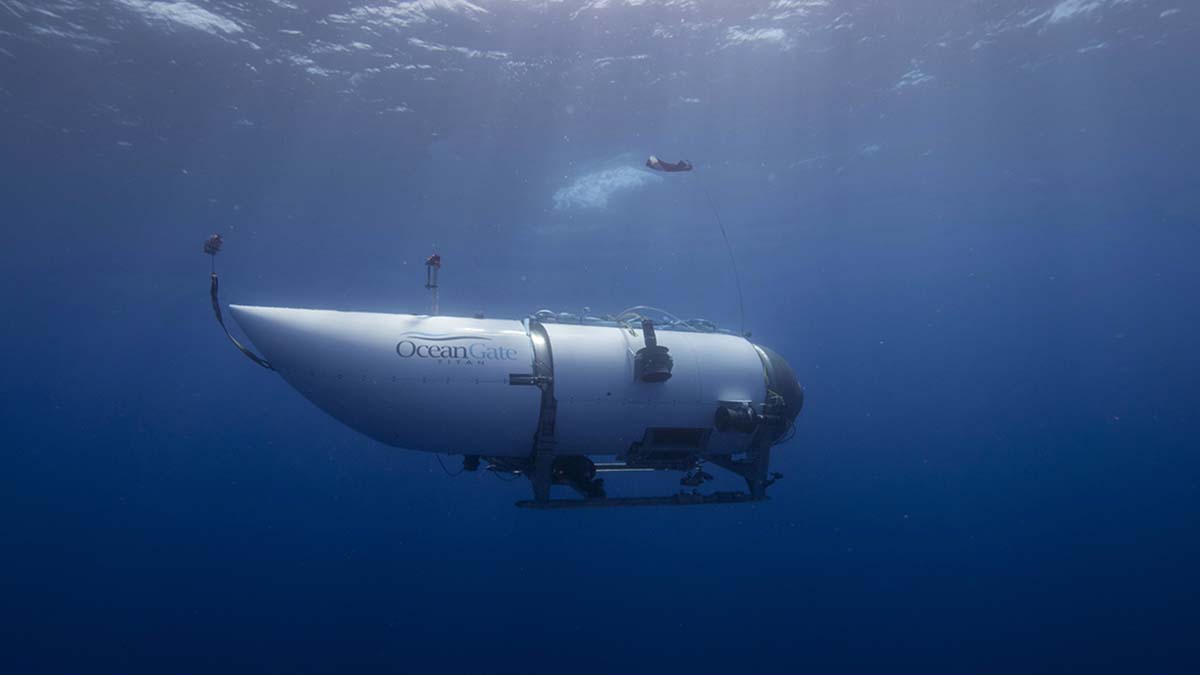When the news broke that the Titan submersible was missing, naval experts immediately recognised that the chances of saving the lives of those on board were, realistically, tantamount to non-existent.
With rare agreement, they swiftly concluded that the kindest outcome for the five passengers would be that the submersible had imploded.
Hard-hearted as this may sound, their deaths were vastly preferable to the terrifying demise of gradually suffocating in a cold, inky darkness
Ruptured parts of Titan’s titanium end caps found yesterday, mere metres from Titanic’s wreck, show that the vehicle did suffer from an abrupt, catastrophic hull collapse.
It may be that those on board were aware of a problem. But they would have had no inkling that death was imminent – the implosion would have taken far less than a second.
Given that Titan had by then dived to nearly 3,800m, the weight of sea water would have generated pressure of at least 5,500 pounds per square inch, meaning that their bodies will have almost undoubtedly been instantly decimated. It’s the grimmest of deaths, not least for families left with nothing to bury.
But hard-hearted as this may sound, it was vastly preferable to the terrifying demise of gradually suffocating in a cold, inky darkness.
One third of Royal Navy submariners perished during WW2, many of whom drowned in similar conditions and have no graves. The Senior Service knows many of these sailors suffered before death; it’s one of the reasons why they are deferentially referred to as being ‘on eternal patrol’.
It became clear as we neared the deadline for Titan’s oxygen supply running out that searchers were shifting their goal from rescue to recovery. Retrieving Titan’s remains from the seabed will cost millions but should yield some clues to its ending. It is possible that stress sensors on the hull might have been triggered and, if so, perhaps this information was retrieved. But OceanGate Expeditions has so far been mute about what it knows.
The search and rescue team believes that Titan imploded several hours after diving on Sunday, and it’s emerged that the US Navy picked up sounds of the suspected accident at a similar time to when communications with the submersible cut out.
The American Navy has had sensors on the coast for several decades. During the second world war, German U boats mounted Operation Drumbeat, which saw its submarines successfully attack America’s east coast. One boat even surfaced close enough to New York to see the city’s lights on the horizon. This led the US Navy to develop a classified early warning system, with seabed sensors installed along the coastline to pick up any future enemy submarines.
A more modern version of this, called the Integrated Undersea Surveillance System (IUSS), is now in place and, given the effectiveness of sea water as a conduit for sound, is very likely to have a recording of the submersible’s brief death rattle.
The Navy’s report into the incident will be extremely detailed – but also probably subject to classification.
IUSS successfully detected the implosion of the Argentine submarine ARA San Juan in November 2017 and was able to pinpoint not only its exact position, but that water entered her at 1,800 mph and the pressure hull collapsed in four milliseconds.
The Naval Intelligence lead analyst concluded: ‘They did not drown or experience pain. Death was instantaneous.’
The US Navy is currently being slated for not revealing what it knew about Titan’s collapse during the rescue – but it deems operational security far more important than releasing sensitive information into the public domain. It will also have given the coast guard as much information as possible.
Other questions still remain though about the quality of the Titan vehicle and OceanGate’s decision to desist from regulatory oversight. Compared to other well-established deep sea operators, bristling with sophisticated tech, the Titan seemed very rudimentary. This set alarm bells ringing for specialists years ago. Submitting Titan to independent scrutiny would not only have allowed proper assessment of its design but, crucially, meant that the submersible had a strict, clearly-defined maintenance programme.
The explicit reason why the UK built four Trident Vanguard-class submarines was to allow for periods when the boats could be painstakingly maintained and brought back to the standard required for another patrol.
Admirals are all too aware that submarine and warship hulls degrade from being submerged and endlessly hit by waves – this is why some Type 23 frigates are currently being retired early.
Surely OceanGate must have been aware of this cyclic degradation – but did they properly test and research it?
Perhaps Titan had a black box, which can be recovered and we’ll eventually learn more. More likely it didn’t and these latest Titanic deaths will generate another enduring mystery. What’s abundantly clear already, though, is that these five deaths were utterly avoidable.






Comments